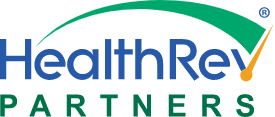
Home Health Coding 101
What is Home Health coding?
Home Health coding in the PDGM world is much more specific than what we’ve ever seen in the industry. The coder must have specific documentation from the physicians and clinicians to ensure proper primary diagnosis coding and that all secondary diagnoses are coded to the highest specificity. It’s also important to have all of the comorbidities the patient may have so that those may be coded. This could potentially result in a comorbidity adjustment (which could increase reimbursement).
What does a home health coder do?
A home health coder reviews the entire patient chart including medical records, clinician and physician documentation, visit notes and the OASIS in order to code to the highest specificity. Coding in the PDGM world requires much more specific physician documentation than ever before to ensure that the primary diagnosis is not only correct, but will be acceptable under PDGM. Find out more on who owns the documentation and how home health coders look at a “paper patient” to accurately review a chart.
What is the ICD-10 code for home health services?
There is not a code for this. ICD-10 is diagnostic coding, not services.
Coding Changes as of October 2021: Most Commonly Used Home Health Codes
Video From Jessica, Director of Coding and OASIS Review:
Jessica’s List of the Most Commonly Used Codes in Home Health that are Changing:
Coding can be complex, especially with an expansive list and complicated sequence requirements. If you need a little bit of help or full management, we have you covered. Click HERE to receive a no obligation, fully transparent coding services quote.
Learn more about outsourcing home health coding
Home Health Coding Certification
What certification do home health coders need to have?
Home Health coders should be ICD-10 certified which can be obtained by earning the HCS-D certification or the BCHH-C certification.
How is home health coding different from inpatient care?
Even though Inpatient coding and Home Health coding use the same coding set, they are different in many ways. Procedure codes are not used in Home Health; however, they are used in Inpatient Coding. Typically there are not many acute care codes used in home health because, for the most part, that acute condition is resolved while inpatient; whereas, Inpatient coders would capture those acute conditions as they are actively being treated while inpatient.
What is episodic and non-episodic care related to home health coding?
Episodic claims will be submitted in monthly intervals and each episode will require coding with each resumption of care. Claims that are billed non-episodically will require less from a coder as those claims will only be assessed upon admission.
Why should a biller know home health coding?
A biller should be somewhat familiar with coding to ensure that claims are not sent through with improper codes and in turn get rejected – Certain codes are deemed obsolete and the billing and coding staff would need to be aware of which diagnostic codes are impacted.
Using an obsolete code can delay reimbursement and in some cases prevent a claim from passing validation checkpoints in the clearinghouse if used on a claim after the date deemed obsolete.
Want to talk to someone about your coding or billing needs? Contact a member of our team to learn more.


